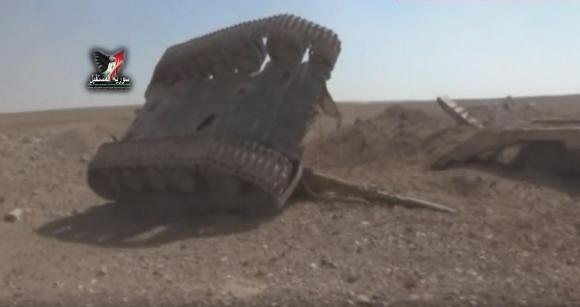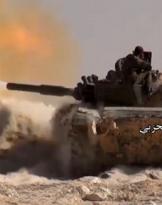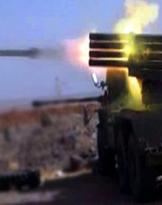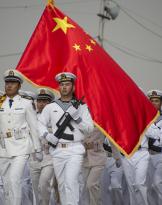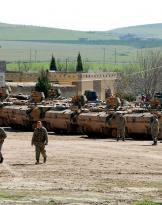Agreement reached between USA, Russia and Jordan. The rebels tied to the Free Syrian Army they abandon the stations in the deserted countryside between Syria and Jordan and return to Jordan. The territory will be taken over by the Syrians with the only exception of the restricted area of the Al Tanf border post, where an American detachment will remain. Discard the voices on the possible re-entry into Syrian Kurdistan of US soldiers in the base. At present they remain as a well-fortified garrison, surrounded by the return of the government.
The military agreement has great geopolitical importance and theoretically puts an end to one controversy armed forces that last for more than a year. In the summer of 2016, when it was now clear that the Syrian reconquest at ISIS was only a matter of time, the border area between Syria, Iraq and Jordan has started to be the subject of direct interest of the US and the closest collaborators in NATO, Great Britain on all.
Around Al Tanf, in the months the largest American base (the only fact) was born in the south of Syria, hub referring to anti-Assad militias, trained and equipped by Washington and London.
Special units in the United Kingdom were joined by Norwegian units with the aim of controlling the border and preventing a return of the regular forces and paramilitaries loyal to Damascus. 
The decision, for which implementation of the time is still to be established, basically determines the sunset of the design of a permanent bearer between Syria, Jordan and Iraq imagined by the US in the last phase of the Obama era.
Preventing a constant osmosis between Syrians and Iraqi Shiite militias active in the northwest of Iraq was a strategic goal strongly wanted by Israel, frightened by territorial and ideological continuity between Iran, Iraq and Syria.
In order to achieve this, a long talk about a possible invasion of southern Syria by US and Jordanian forces has been discussed for months in the bases of the reign of Hashema. The unexpected Syrian victories east of Al Tanf have, however, brought direct contact with the faithful forces to Assad with the terrorists of the Islamic State present in the Deir Ezzor governorate, creating an unforeseen strategic framework.
The Deir Ezzor region is the last farthest part of Syrian territory controlled by the Islamic State. The first to get rid of the Abu Kamal area (the border on Euphrates between Iraq and Syria) would control an important oil area and the main connection between Iraq and Syria.
Were it behind front in the south sector, does it mean that the US will allow the Syrians to control the whole region south of Deir Ezzor?
The dilemma remains because the consequences will have effects on the whole region.
For now the Syrian troops that have broken the siege of Deir Ezzor are pushing as much as possible towards the Euphrates, to cut at the SDF US wire to the south Raqqa gear. In this regard, military sources speak of columns of Syrian army vehicles equipped with boats and river vehicles heading south east. The real objective of Damascus, as well as liberating all Deir Ezzor still in the hands of the Caliphate, is to pass the Euphrates and aim at Abu Kamal.
The situation is delicate but understandable.
The abandonment of rebels on the Syrian-Jordanian border and the idea of an anti-Shiite bearer with the acceptance of a return of Syrians around Al Tanf, does not really stride with the new American course. Despite the sporadic bombings in the area at the hands of governmental forces, in the course of the 2017 things have changed. Trump's approach to the Syrian crisis was fundamentally different from the previous administration.
 Rather than entering into strategic conflict with Russia trying to fight Assad, the US President chose the only way left in Washington to avoid a total debacle Syrian (and Middle Eastern): climbing the wagon of the winners by fighting ISIS harshly and using the military presence on the ground and the results achieved as future negotiating paper. Raqqa's release and the cutting of funds to anti-Assad rebels, for years sustained and armed by the United States, are in this respect emblematic.
Rather than entering into strategic conflict with Russia trying to fight Assad, the US President chose the only way left in Washington to avoid a total debacle Syrian (and Middle Eastern): climbing the wagon of the winners by fighting ISIS harshly and using the military presence on the ground and the results achieved as future negotiating paper. Raqqa's release and the cutting of funds to anti-Assad rebels, for years sustained and armed by the United States, are in this respect emblematic.
What do Americans earn?
The US and their perpetrators Syrian Democratic Forces they occupy eastern Syria beyond the Euphrates and in fact control a part of the territory that will not return under the sovereignty of Damascus for the foreseeable future. It is not a partition of the country like the one imagined at the beginning of the war; the Syrian government will still remain in the hands of much of Syria it once was, with all the cities over 100.000 inhabitants except for Idlib and Raqqa. However, the fact remains that today a burning defeat such as the one that was taking shape with the open clash with Moscow over Assad's stay in power, has been averted for the US.
How does Israel take it?
Attacks against Syrian stations that continue sporadically, say it long. Tel Aviv's military activities in Golan occupied and interweaving with anti-Damascus rebels militants in Dar'a region snuff out day by day. The idea of a Shiite corridor between Tehran and Beirut (via Baghdad-Damascus) takes away the Israeli government's sleep, but the Jewish state can not afford an open conflict and entry into large-scale Syria. It would risk breaking with Russia, a recapture of Arabs and Islamists, and especially a direct confrontation with Iran. Even military outcomes would not have taken off. It can, however, surgically attempt to stem the Shiite expansion, unforeseen at the beginning of the Syrian war.
The guarantees that Moscow will provide to Israel with regard to Hezbollah and Shiite militias controlled by Tehran will in any case be the basis of near-future stability.

(photo SAA / Amaq)

